Adenocarcinoma
A 56-year-old female presented with abdominal pain, R/O colitis. There is a long segment of asymmetrical wall thickening seen involving the ascending colon just above the ileocaecal region to proximal third of transverse colon associated with luminal narrowing and significant surrounding fat stranding and enlarged regional lymph node.
Clinical History
56-year-old female presented with abdominal pain, R/O colitis.
CT Findings
There is a long segment of asymmetrical wall thickening seen involving the ascending colon just above the ileocaecal region to proximal third of transverse colon associated with luminal narrowing and significant surrounding fat stranding and enlarged regional lymph node.
There is small focal collection noted measuring about 3 x 2 x 2.3 cm in the AP, transverse and craniocaudal diameter situated inferior to the proximal portion of the transverse colon.
There is no associated proximal wall dilatation or bowel obstruction. Diverticulosis of the left hemicolon is noted.
Pathology
Right colon removed along with lymphnodes.
Adenocarcimona, moderately differentiated, ulcerated.
Discussion
All most all colon cancers are primary adenocarcinomas, which are the third most common cancer in both men and women in North America and Western Europe.
Colon cancers are the most common gastrointestinal (GI) carcinomas and have the best
prognosis. The 5-year survival rates of approximately 50 percent may be improved by screening and removal of adenomatous polyp.
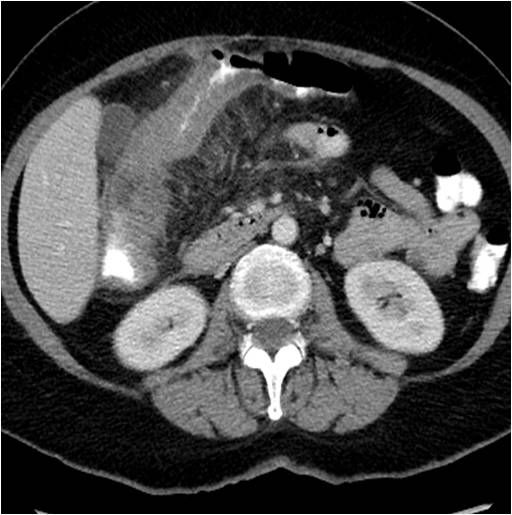
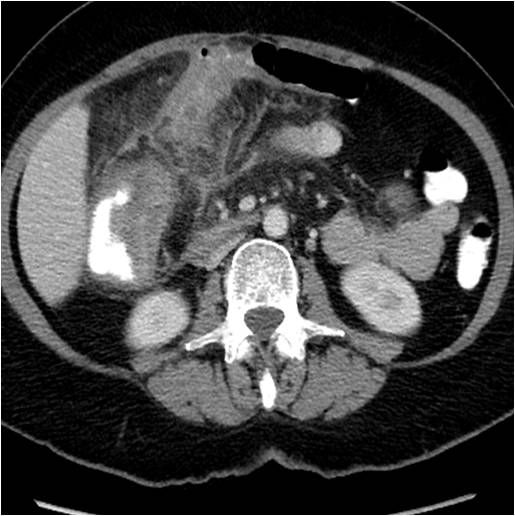
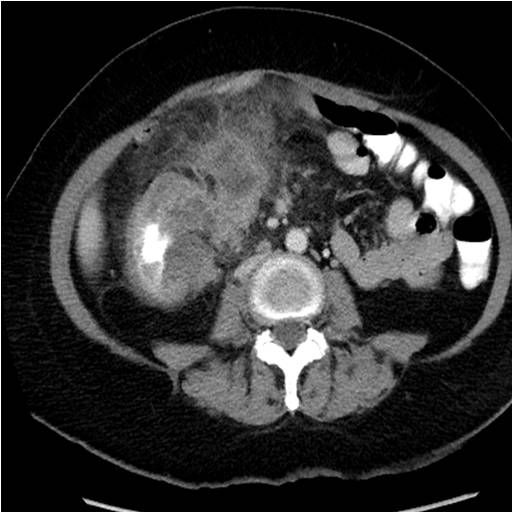
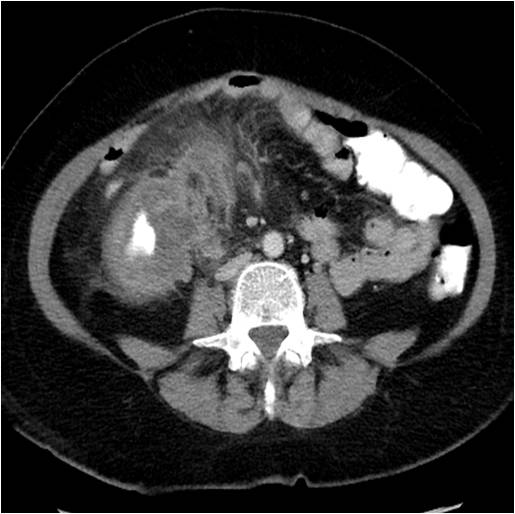
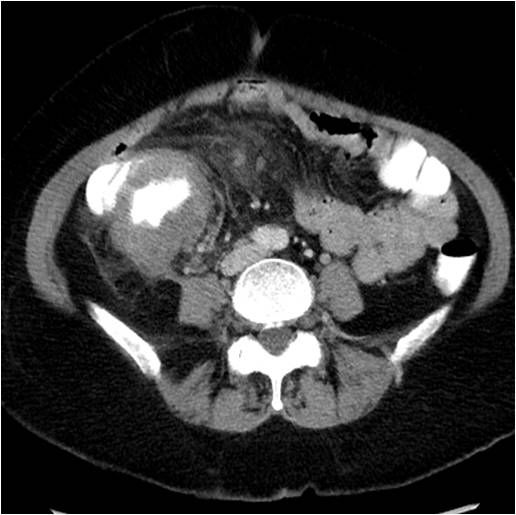
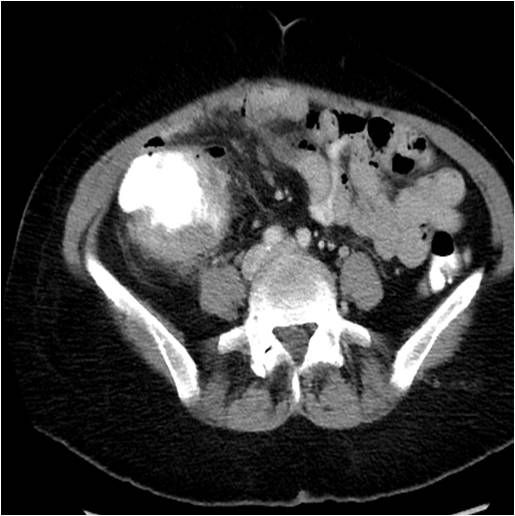
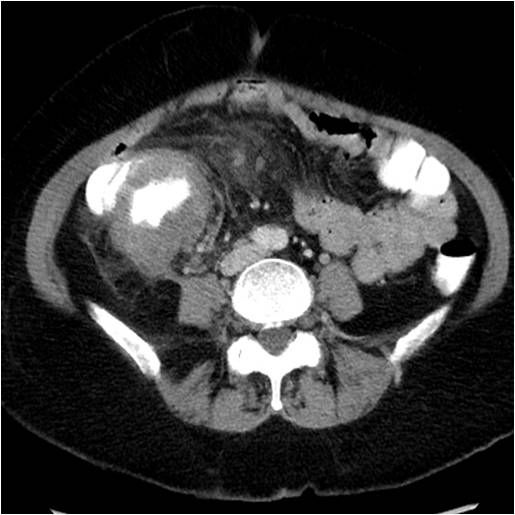

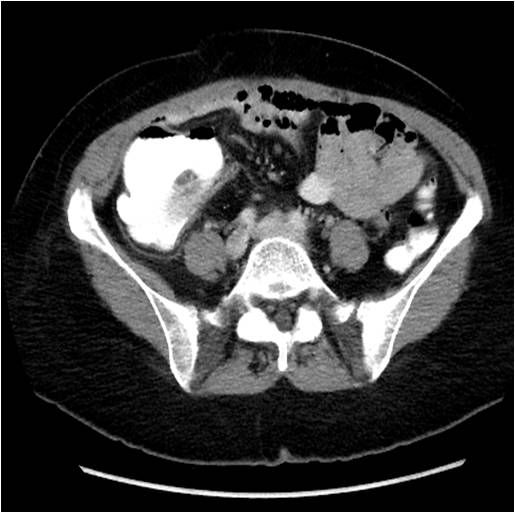
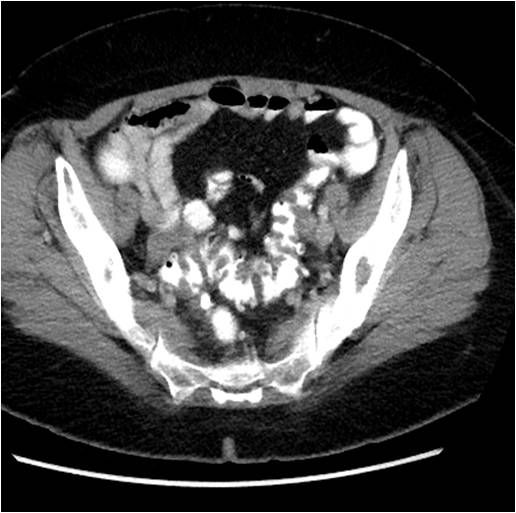
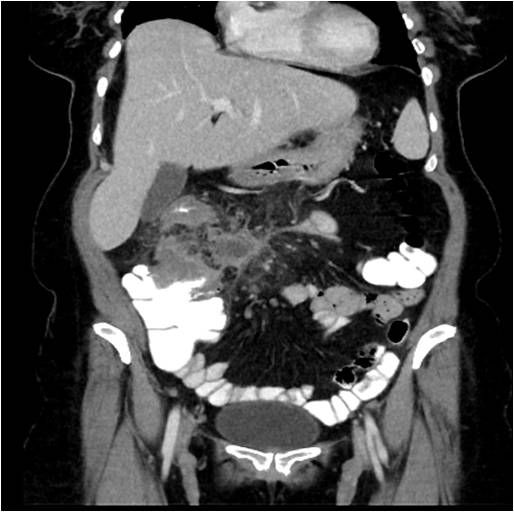
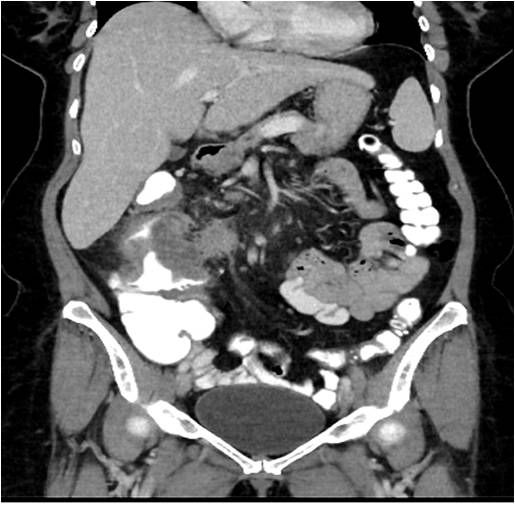
Classification Systems
The prognosis of patients with colon cancer relates to the stage of the disease at the time of diagnosis and to initial treatment. Although a tumor, node, metastasis(TNM)–based international classification and a computed tomography (CT) staging system have been developed, the Dukes classification (or one of its modifications) is widely used. Prognosis is also affected by the histologic grade of the tumor.
The complications of colon cancer include obstruction (common), perforation (uncommon), intussusception and ischemic colitis proximal to an obstructing tumor (rare), and fistula formation in the small bowel, bladder, or vagina (rare).
Table 1. Dukes Classification and 5-Year Survival (modified from Zinkin)
Table 2. CT Scan Staging System for Colon Cancer
* Modified from Thoeni.
Table 3. TNM/Modified Dukes Classification System
*American Joint Committee on Cancer
Sushila Ladumor, MD, FRCR, Consultant Radiologist with Multi-modality Imaging experience, working in Medical Imaging Department, King Abdulaziz Medical City, Riyadh, Saudi Arabia.
References
http://emedicine.medscape.com/article/367061-overview#a22
Bromer MQ, Weinberg DS. Screening for colorectal cancer--now and the
near future. Semin Oncol. Feb 2005;32(1):3-10.
Rex DK, Lieberman D. ACG colorectal cancer prevention action plan
: update on CT-colonography. Am J Gastroenterol. Jul 2006;101(7):14103-
Thoeni RF, Moss AA, Schnyder P. Detection and staging of primary rectal
and rectosigmoid cancer by computed tomography. Radiology. Oct
1981;141(1):135-8. [Medline].
Can Emerging AI Software Offer Detection of CAD on CCTA on Par with Radiologists?
May 14th 2025In a study involving over 1,000 patients who had coronary computed tomography angiography (CCTA) exams, AI software demonstrated a 90 percent AUC for assessments of cases > CAD-RADS 3 and 4A and had a 98 percent NPV for obstructive coronary artery disease.










